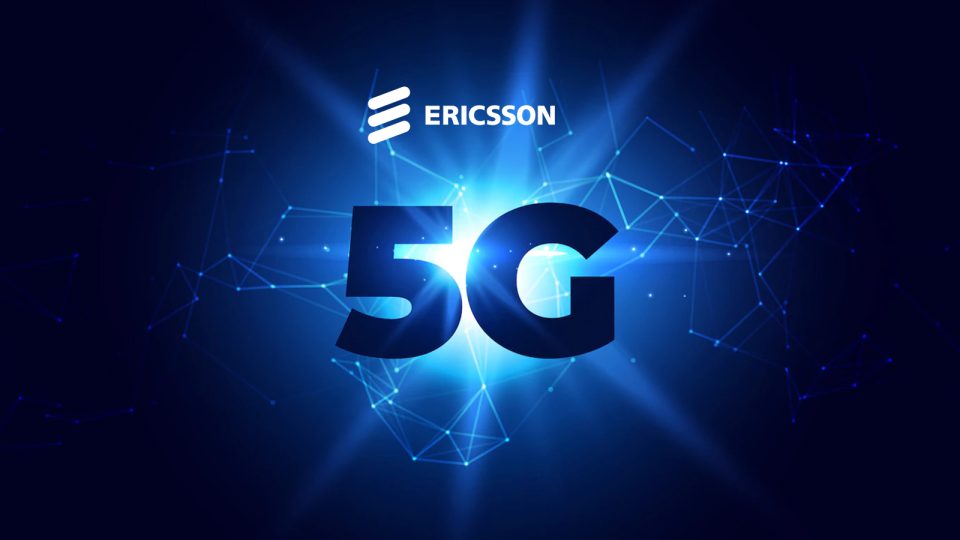-
Ericsson and Vodafone delivered a successful network slicing demonstration with consumers at Coventry University on a 5G Standalone network
-
88 percent ranked the 5G Standalone gaming experience on an optimized network slice at least 8 out of 10, compared to 13 percent on non-optimized connectivity
-
The trial confirmed a 5G Standalone network slice can enhance mobile gaming, with gamers experiencing more stable connectivity, increased speeds, lower latency, less jitter and smoother graphics rendering
Ericsson and Vodafone have completed a live network trial at Coventry University which successfully demonstrated the positive impact an optimized 5G Standalone network slice could have on enhancing the mobile gaming experience for consumers.

CIO INFLUENCE News: Bulletproof Is a Proud Participant in the Microsoft Security Copilot Partner Private Preview
Using network slicing, a major function of a 5G Standalone network that will allow Vodafone to customize connectivity services for specific customers and use cases, the trial participants were able to experience more consistent gaming connectivity with a 270 percent increase in throughput, a 25 percent decrease in latency and 57 percent less jitter, as well as smoother graphics rendering.
Andrea Dona, Chief Network Officer, Vodafone UK, said: “5G Standalone is not an upgrade on 4G, but an entirely new type of technology. Through this trial, we provided a slice of connectivity, customized specifically for gaming, to provide a full fibre like experience over the airwaves. This is the value of network slicing – a more personalized connectivity service to make digital more in-tune with each customer.”
During the trial, participants were asked to play cloud-based mobile games under two connectivity scenarios.
- Scenario A simulated the performance of an existing public mobile network.
- Scenario B was an isolated 5G Standalone network slice that was optimized for cloud gaming. Scenario B’s network configuration had higher download speeds, lower latency, reduced jitter, and no risk of network congestion.
Research conducted by Bryter, an independent gaming insights and consultancy agency, confirmed the success of the live 5G standalone network slicing trial:
- For Scenario A, 63 percent of triallists ranked satisfaction between 0 and 5 out of 10, with only 13 percent ranking satisfaction above 8 out of 10. Frustrations included longer loading screen times, sound and visual issues, and increased latency.
- For Scenario B, 88 percent of triallists ranked satisfaction above 8 out of 10. The better gaming experience was due to improved game loading, smoother graphics rendering, and reduced latency and jitter.
Focus groups following the trial suggested mobile gaming enthusiasts would be highly interested in the 5G Standalone gaming experience as the benefits of faster loading and reduced latency and jitter would give them an advantage over other players.
Phil Patel, Group Director of Product and Services, Vodafone, said: “5G Standalone aims to deliver novel services that would not be possible on today’s networks. Few areas can benefit as much as Cloud Gaming, not only to improve customer experience, but to open the door to entirely new types of content. Today, immersive gaming is realistically limited to consoles, but with 5G Standalone, we can bring it to mobile devices.”
CIO INFLUENCE News: Living Security Announces Partnership with Zscaler to Manage Human Risk
Blessing Makumbe, VP & Head of Digital Services, Ericsson UK & Ireland, said: “A mobile network powered by 5G standalone technology and offering associated services like network slicing are the ultimate next step in meeting connectivity demands from consumers and businesses. Creating tailored network quality with requirements on speed, latency and reliability not only offers the premium performance needed to satisfy the applications and services of the future, but also gives leading operators like Vodafone the opportunity to offer innovative services to enter new markets and expand their business.”
The trial demonstrates the importance of 5G Standalone and network slicing to deliver new 5G use cases and experiences for consumers and businesses, with higher scalability and enhanced quality-of-services management enabling new business models across all verticals and creating new revenue opportunities for CSPs. Ericsson’s network slicing report estimates that 25-30 percent of potential 5G use cases will require network slicing as an enabler.
NOTES TO EDITORS:
- The trial at Coventry University featured 15 gamers of varying degrees of experience (from first time mobile gamers to enthusiasts) and a broad age demographic (18-65 years old).
- Trialists were asked to play mobile gaming under the two different connectivity scenarios (one network slice replicated the public network performance and the second slice was optimized for cloud gaming) and provide both qualitive and quantitative feedback.
- Network slicing allows for multiple virtual network slices across the same physical network, with each slice able to be isolated from other network traffic to give dedicated performance, with the features of the slice tailored to the use case requirements.
- Research from Ericsson and consultancy firm Arthur D. Little shows that CSPs globally have an addressable revenue opportunity of approximately USD 200 billion when it comes to Network Slicing. Network Slicing enables CSPs to offer new services and user experience, and to extend their roles in the value chain exploring innovative business models with partners. Ultimately, Network Slicing enables CSPs to maximize the return on investment in 5G SA via efficient usage and management of the network resources and provide more tailored services at scale.
CIO INFLUENCE News: Fusion92 Announces Acquisition of TRAK Data
[To share your insights with us, please write to sghosh@martechseries.com]


